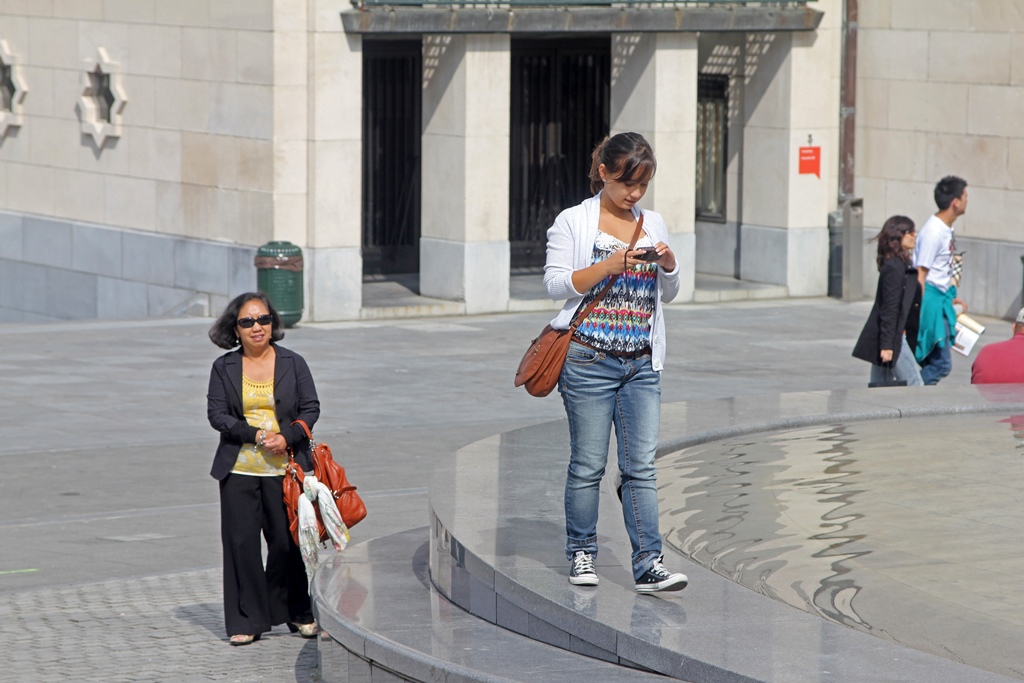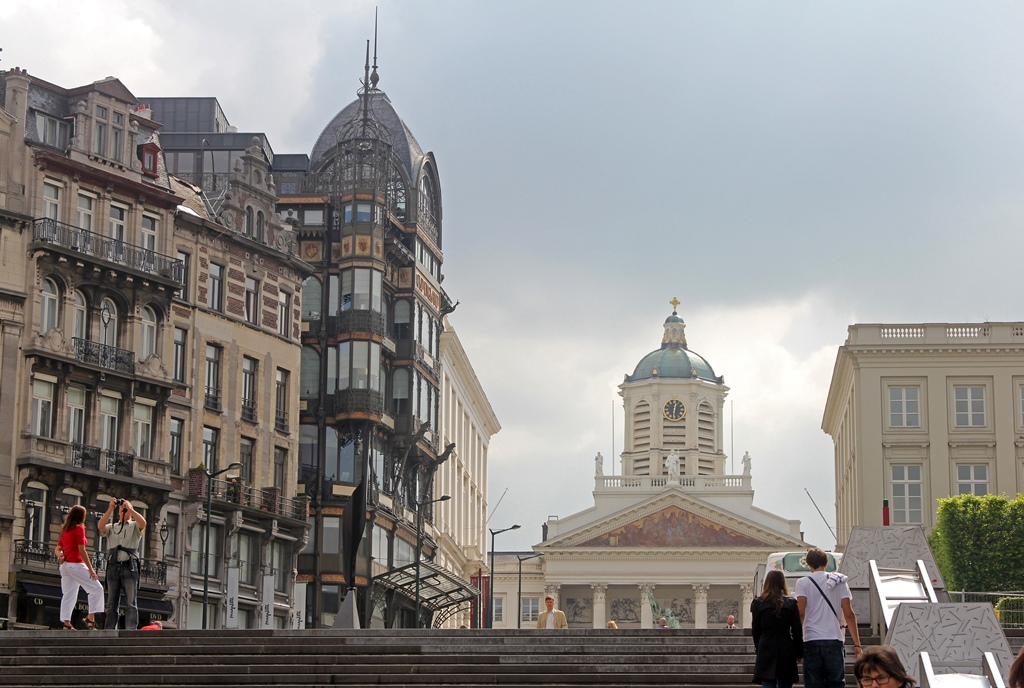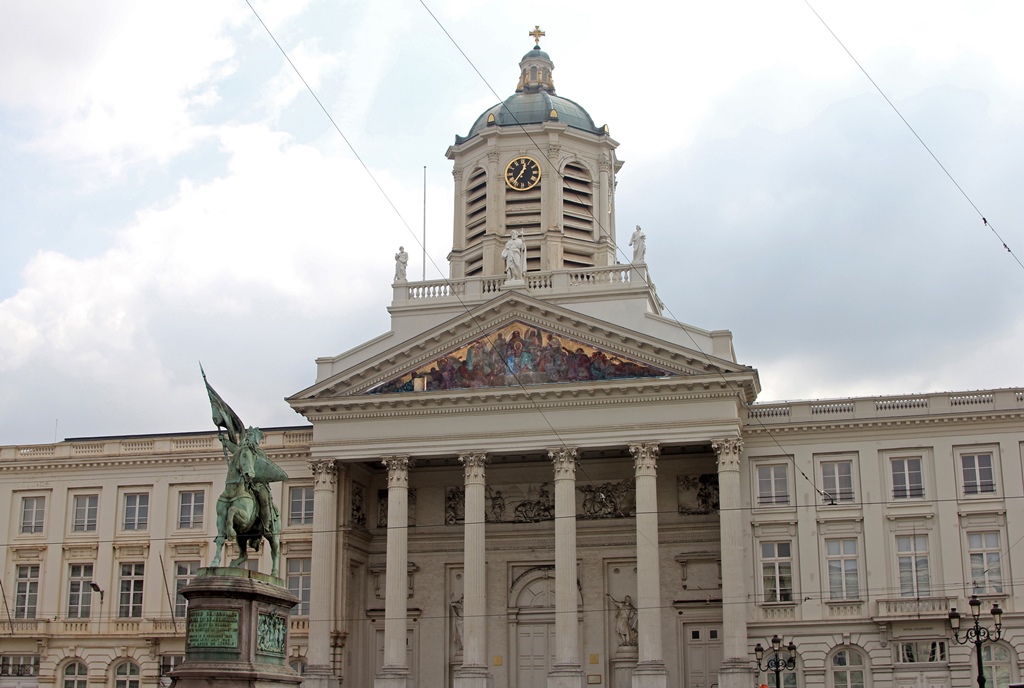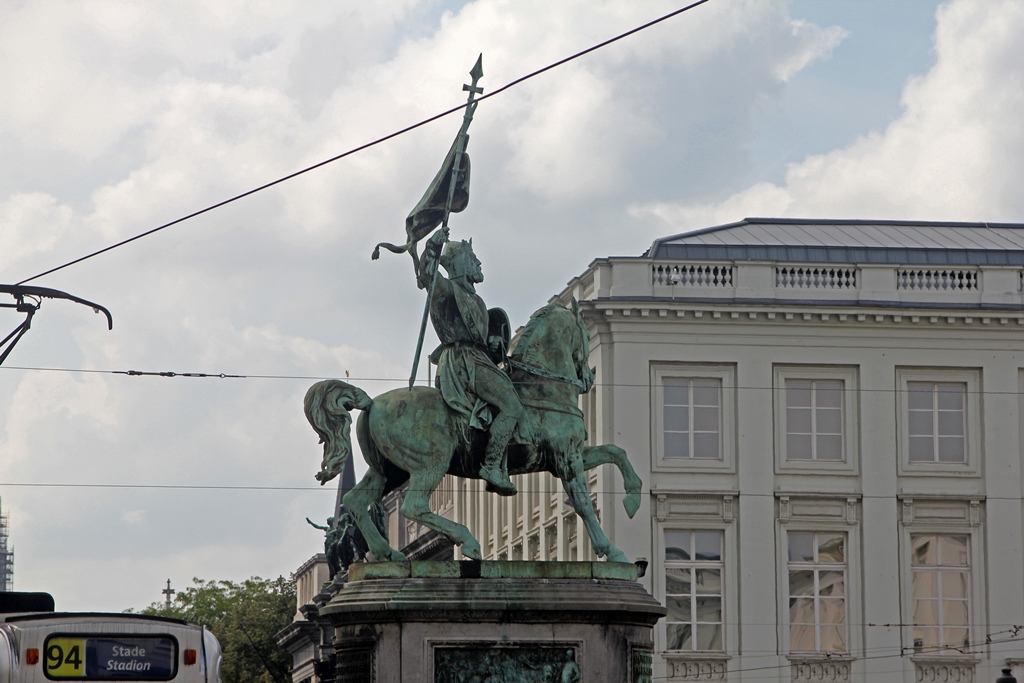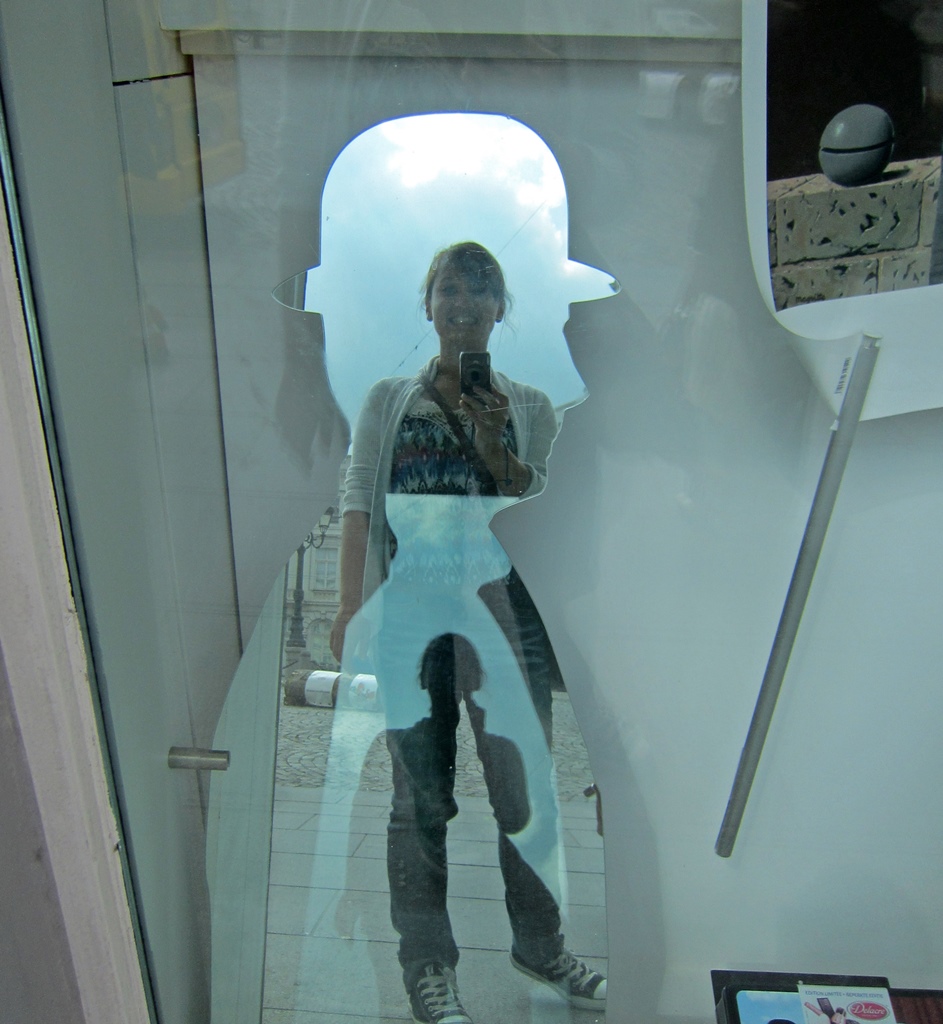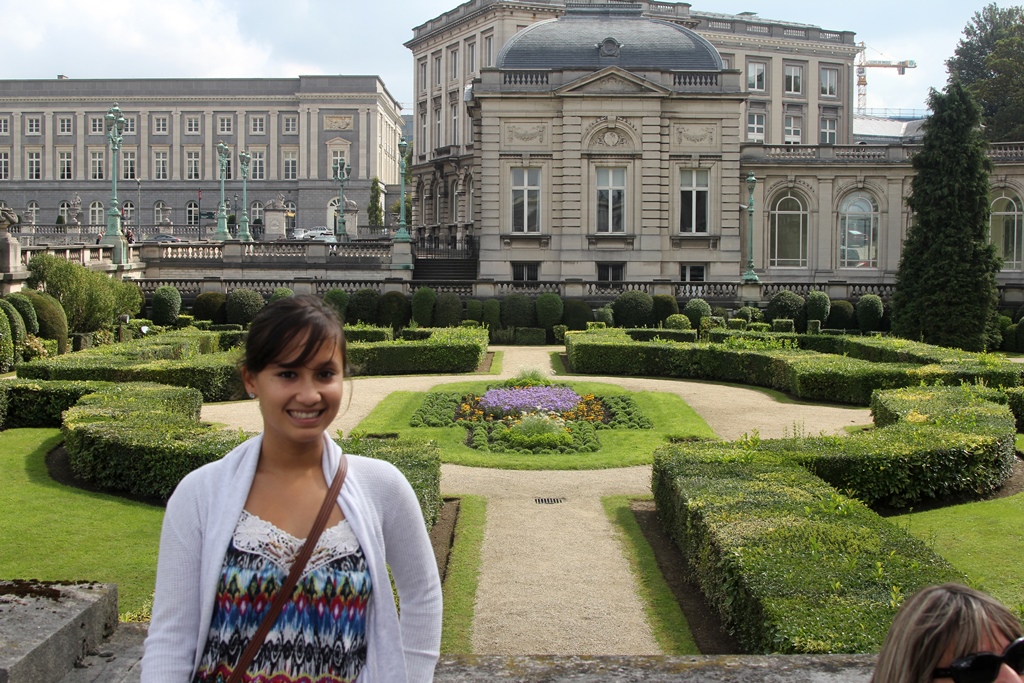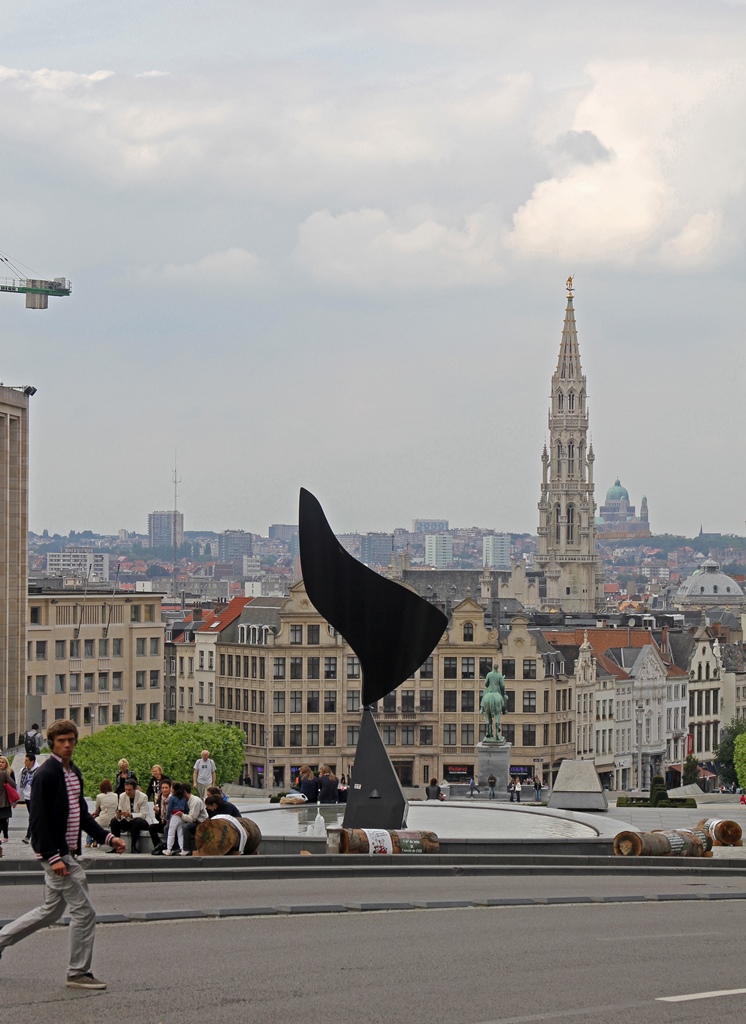The Upper Town of Brussels is called the Upper Town because of its higher
elevation. Higher than the Lower Town, that is. You can probably guess where
the Lower Town’s name comes from. The Upper Town’s altitude advantage comes
from the presence of a hill known as Coudenberg (Koudenberg in Dutch,
meaning "cold hill"). Around the year 1100 this hill was judged to be a good
place to build a defensive fortification. A castle was therefore built and
located on the hill as part of the city wall. By the 14th Century the city
had expanded, and a new wall was built well beyond the first wall, making the
castle much less useful for defense. Over the years it was transformed into a
gigantic palace instead, which became the court of the sovereigns of the
Spanish Netherlands. It was called Coudenberg Palace and it was was
embellished and expanded, and it became a magnet for armies of courtiers. It
was richly decorated with works from artists such as Peter Paul Rubens and Jan
Brueghel. But on February 3, 1731, a fire broke out in the kitchens and
quickly spread. As most of the water in the area was frozen, the fire could
not be fought effectively, and the palace was soon reduced to a ruin, along
with most of its decorations. Because of a lack of money, nothing was done
with the hill until late in the same century – all of the structures now on
Coudenberg date from that time or later. Underground tours have recently
become available to view the foundations of the old palace and some of the
lower rooms which escaped destruction. This wasn’t that interesting to us. But
we were interested in seeing some of what is now above ground.
Climbing up the hill from the Lower Town took us through a nicely landscaped
area known as Albertina Park.
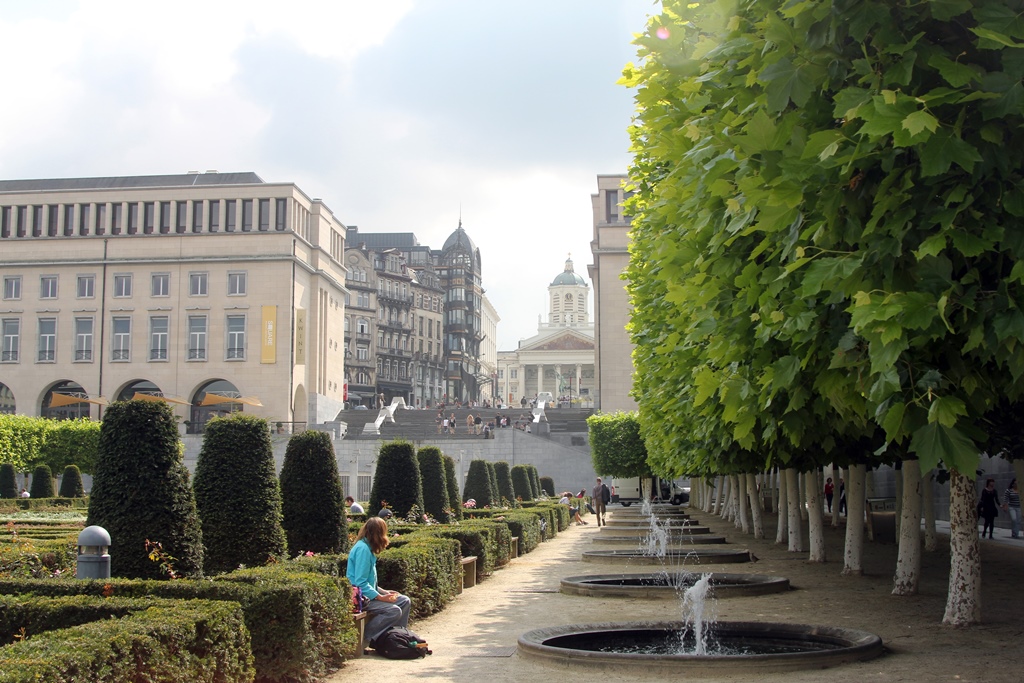
Albertina Park
At a point just above the park we found a fountain and, looking back, a
nice view of the park and Lower Town.
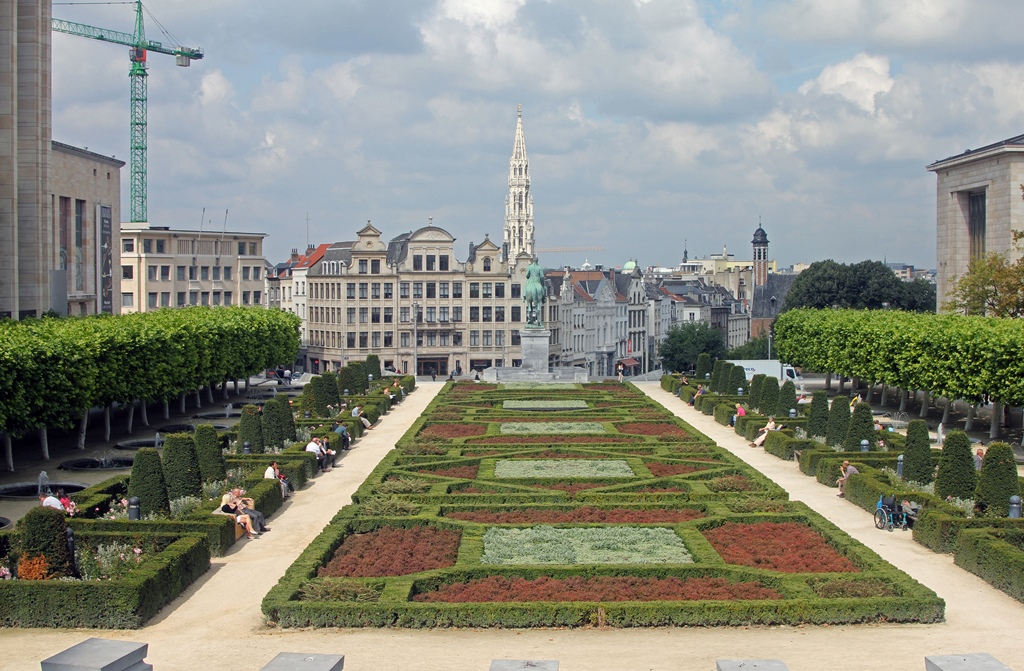
Albertina Park and Town Hall Tower
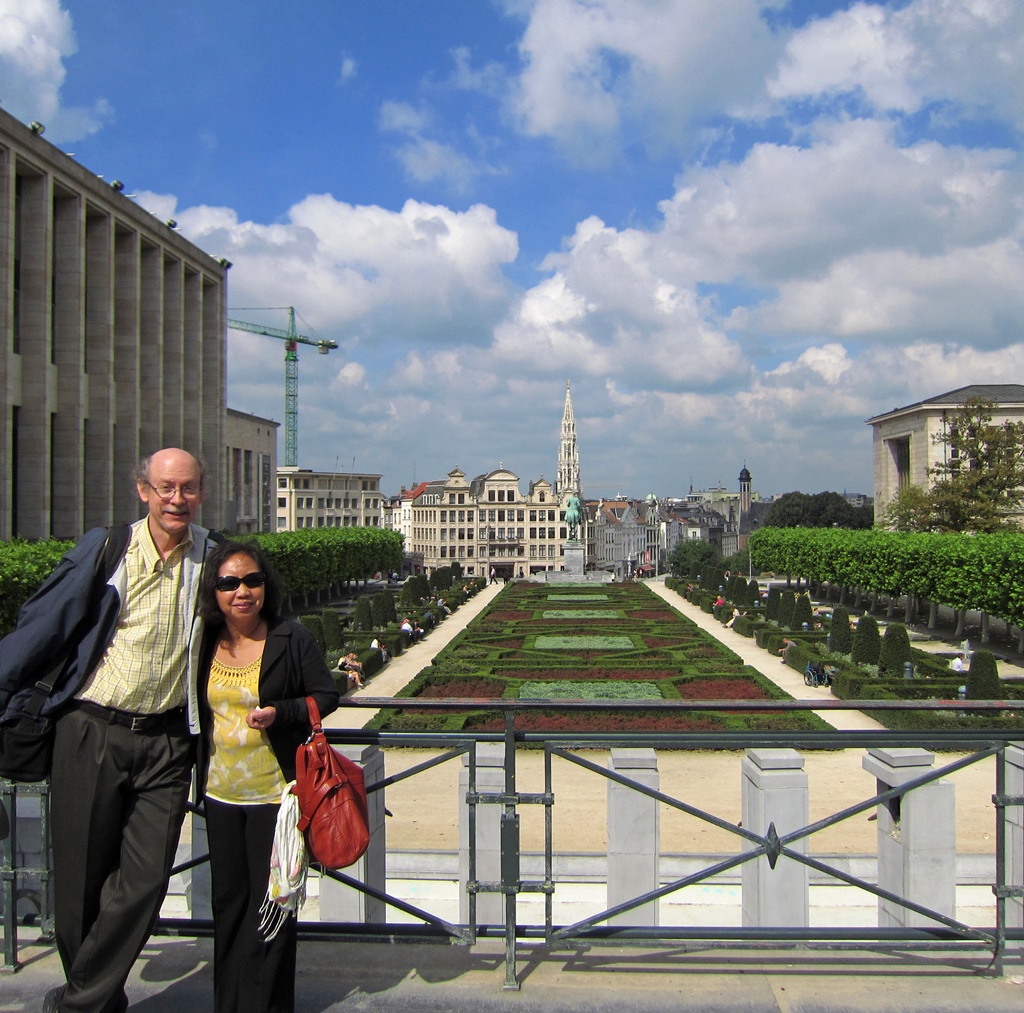
Bob and Nella and Albertina Park
Nella and Connie and Fountain
Continuing uphill, most of the structures we saw were fairly nondescript, but
there were a couple of nicely preserved (or restored) art nouveau buildings
from the late 19th Century. One of these was the Delacre Pharmacy building. The
pharmacy was established late in the 19th Century by Charles Delacre, who sold
(among other remedies) chocolate in his pharmacy for its medicinal properties. This
idea was so successful that he opened his own chocolate factory next
door. Eventually he had to move the factory to larger quarters elsewhere, and in
1891 the Delacre Biscuit Company was born. The biscuit company still operates, and
the pharmacy building, dating from 1895, still operates as a pharmacy.
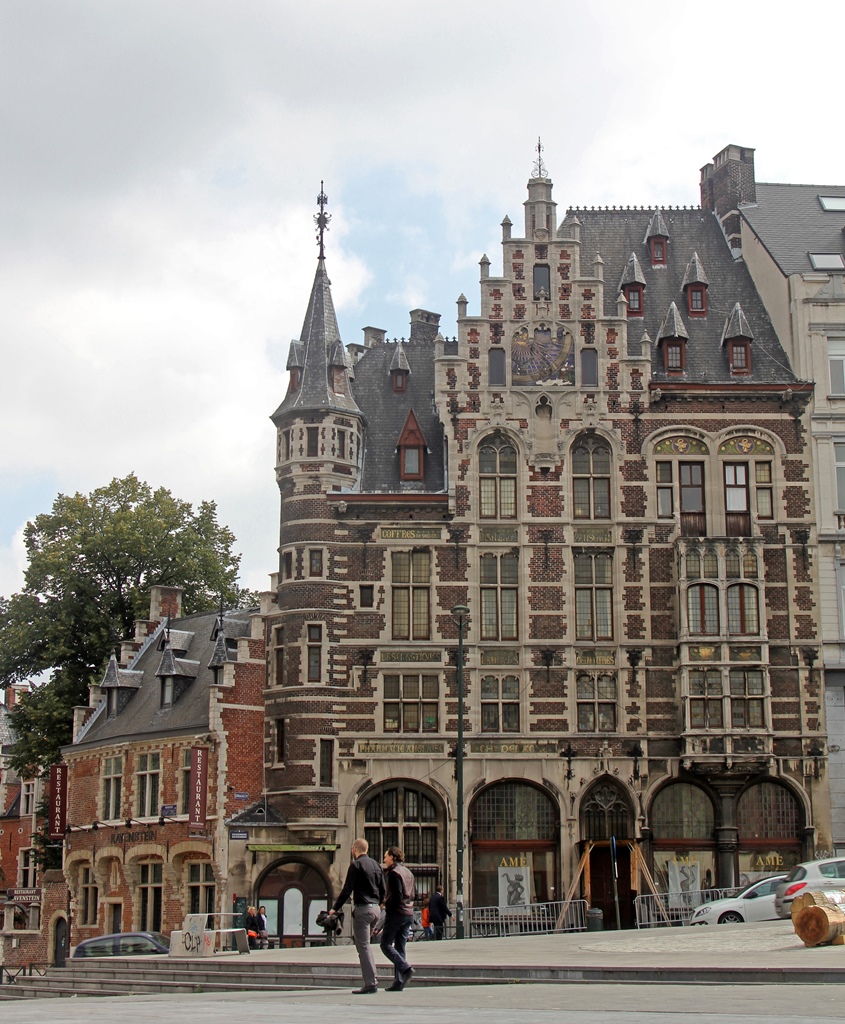
Delacre Pharmacy Building
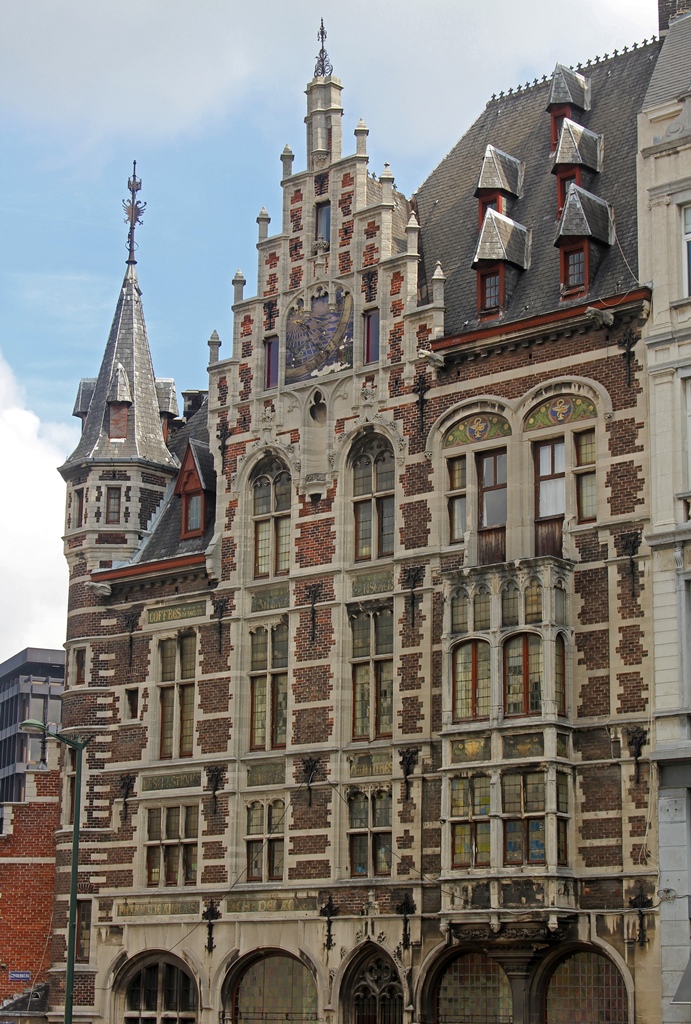
Delacre Pharmacy Building
Musical Instruments Museum and Church
Walking up past the other art nouveau building (occupied by the Musical Instruments
Museum, which will be covered in its own page), we arrived at the Place Royale, a
large square at the top. The most prominent building on the Place Royale is a
large Catholic church called St.-Jacques-sur-Coudenberg, one of the first
new buildings built on the square after the fire. It is neo-classical in style,
with a louvered bell tower that was added later in the 19th Century. The result
(at least for me) is a building that isn’t obviously a church, being more
reminiscent of a mid-western American courthouse (a big one).
Church of St.-Jacques-sur-Coudenberg
In the middle of the square is an equestrian statue of Godfrey of Bouillon,
one of the leaders of the First Crusade in 1096.
Statue of Godfrey de Bouillon
Also located on the square are some museums, including the Royal Museums of Fine
Arts and the Magritte Museum. The Magritte Museum is devoted to the works of
Belgian surrealist René Magritte. We didn’t get a chance to visit this museum,
though we looked into some display windows.
Connie and Window of Magritte Museum
We did visit the Royal Museums of Fine Art, but not until a couple of days
later – this will appear in a later page.
Heading left (north) from the Place Royale, it doesn’t take long to see a large
building on the right. This is the Belgian Royal Palace, the building where the
Belgian King (Philippe since July of 2013, Albert II during our visit) conducts
business of state. The royal residence is elsewhere. The palace was built to
replace the one that burned down, but was considerably smaller. Late in the 19th
Century the palace was enlarged at the direction of King Leopold II, and the
present façade was not completed until the 20th Century. At this time a
decorative garden was also installed in front of the palace. Tours of the palace
are available when not preempted by affairs of state, and we participated in one
of these tours. The rooms included in the tour were quite impressive (one room
in particular has a ceiling covered with the metallic green wing cases of more
than a million Thai jewel beetles), but all interior photography was forbidden
(they seemed to be serious about this). But here are some exterior pictures:
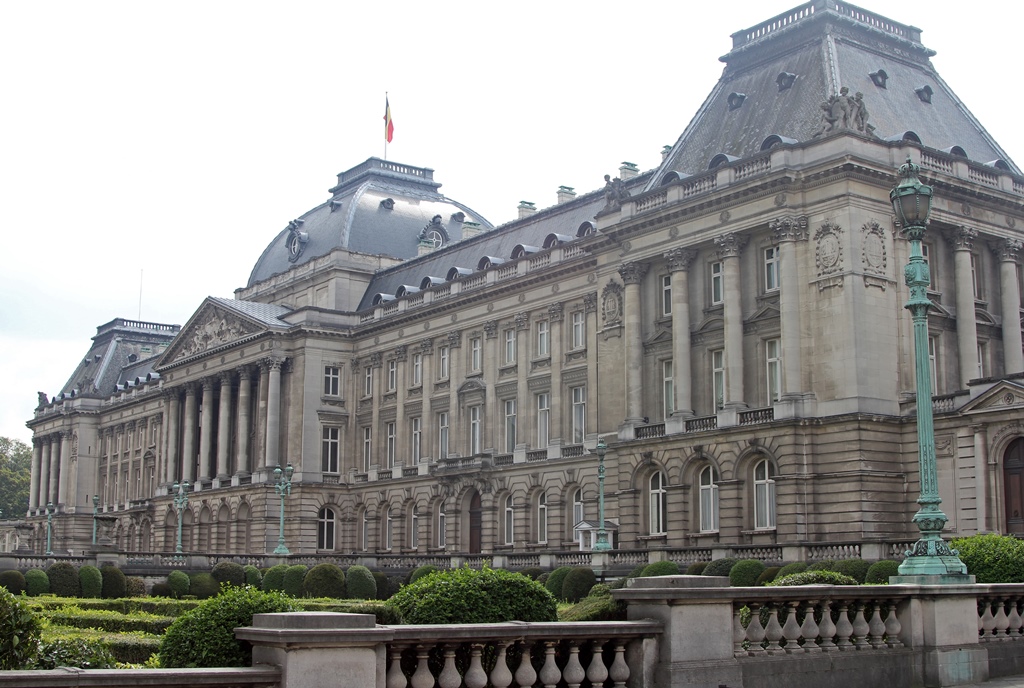
Royal Palace
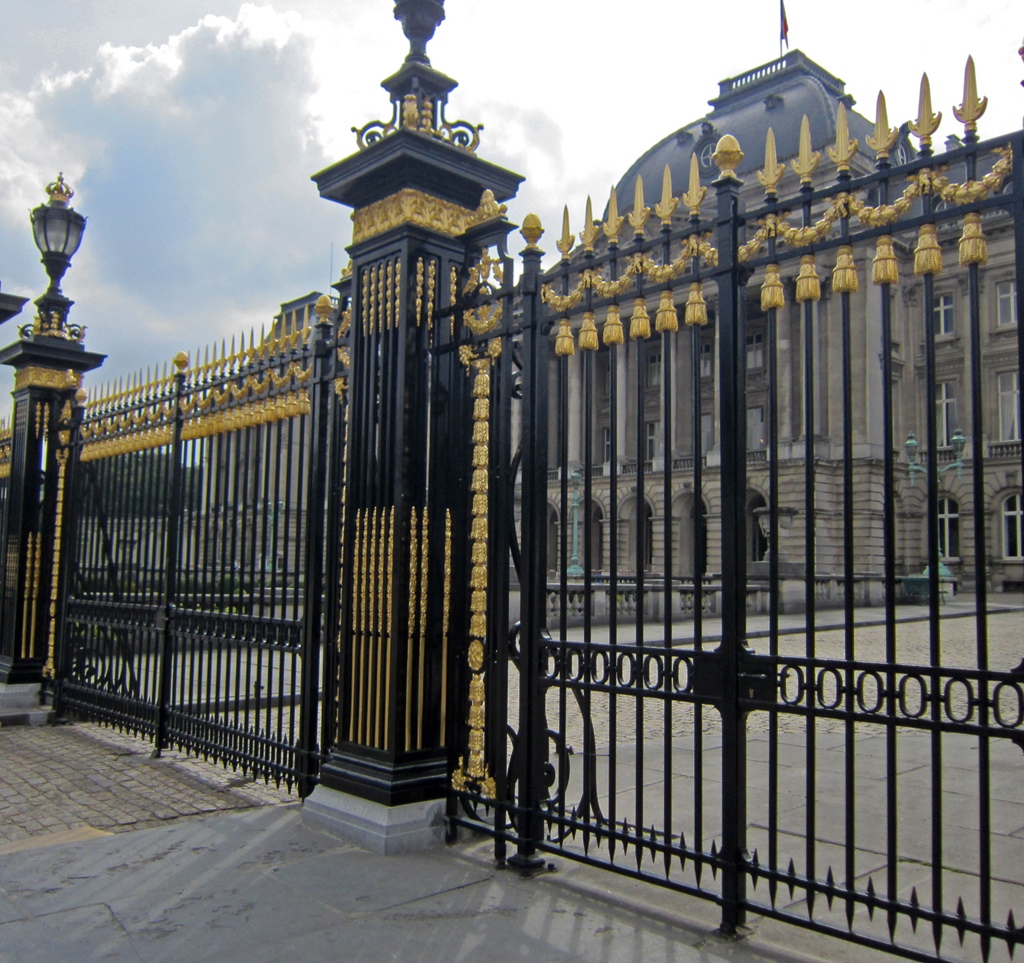
Fence
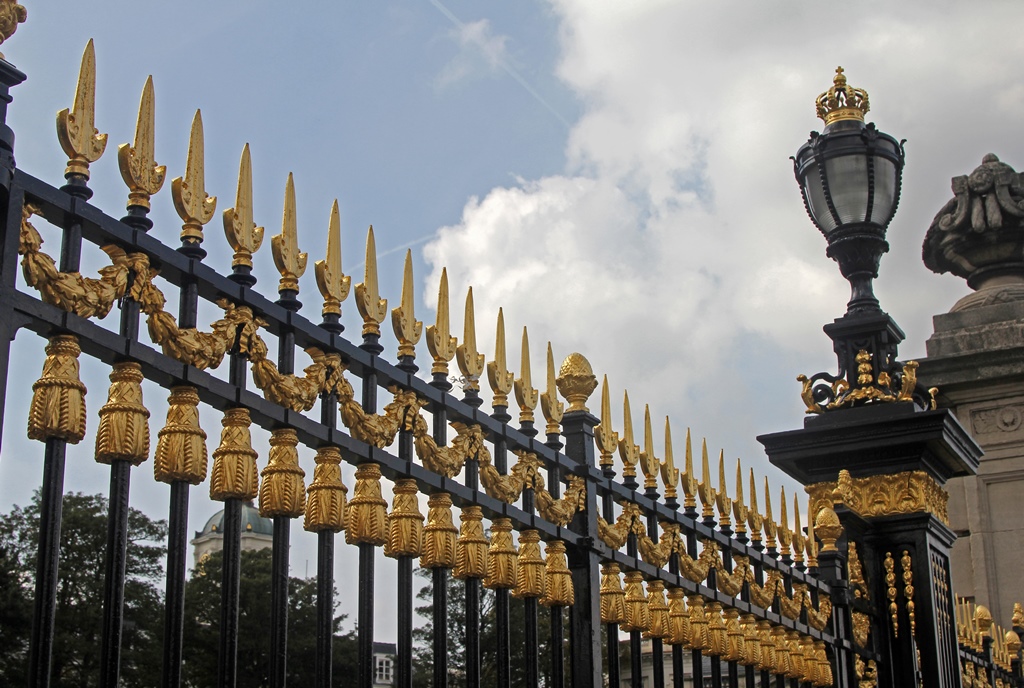
Fence
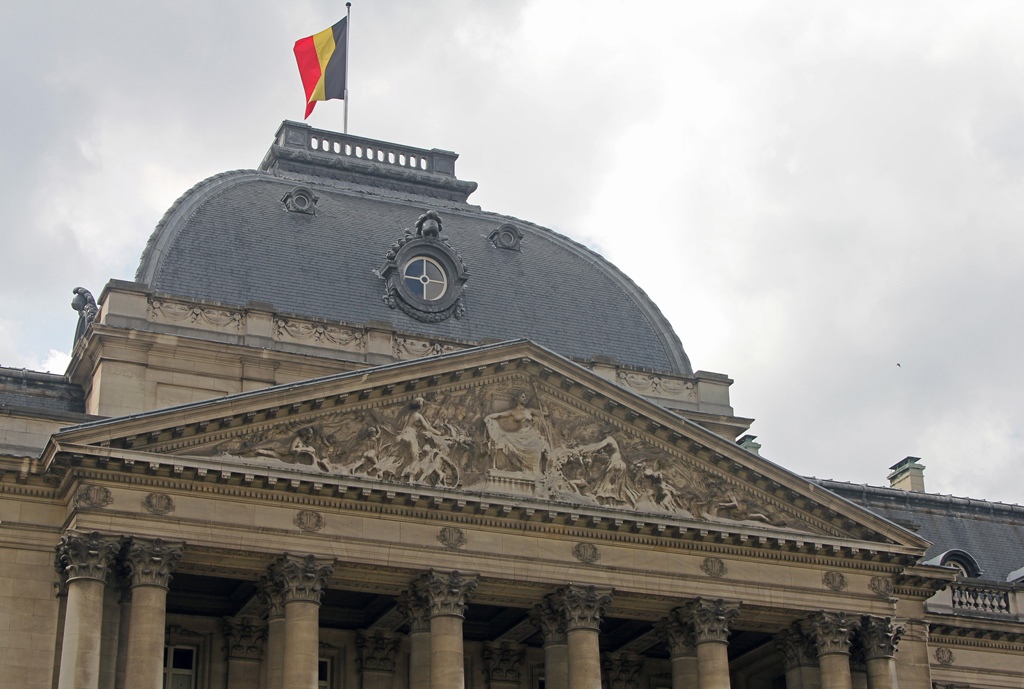
Pediment and Flag
Connie and Garden
Across from the palace is a public park that was once part of the palace
hunting grounds, and on the far side of the park is the Belgian Parliament
building. We didn’t see the Parliament building, but we walked by other
buildings that appeared to be used by the government.
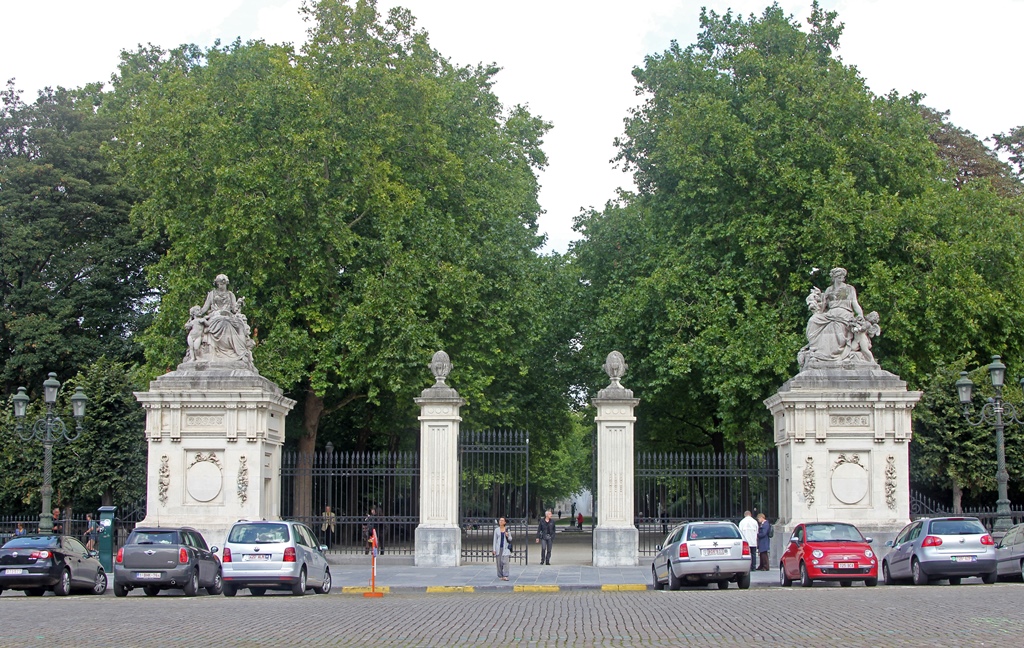
Brussels Park
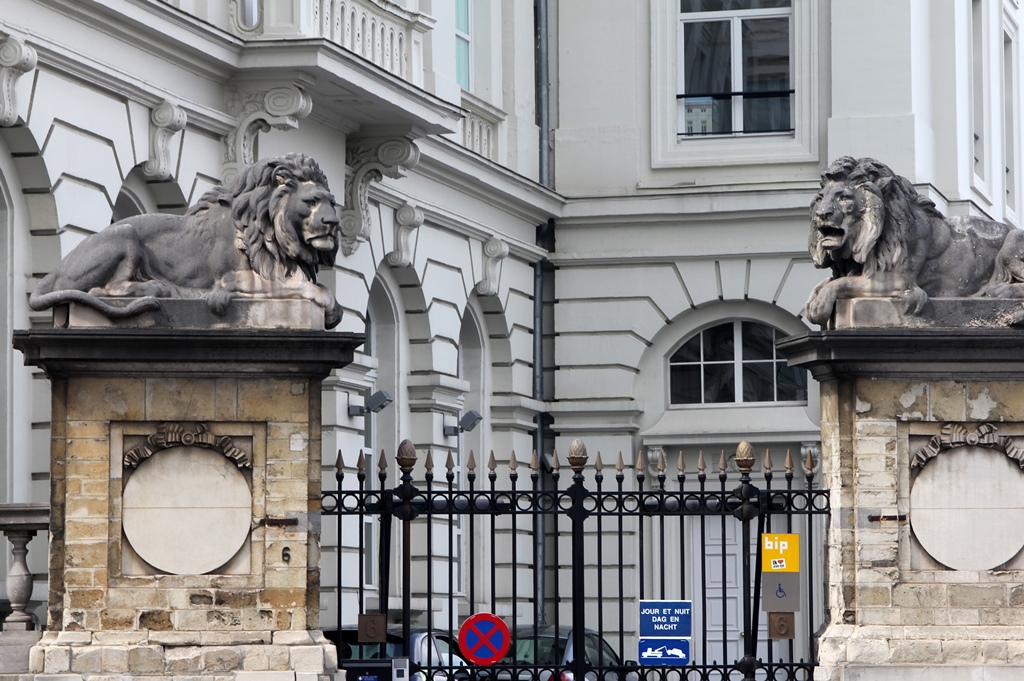
Lions Guarding Building
We retraced our steps to the Place Royale, which has a pretty good view
of the Lower Town, and started back down the hill.
Lower Town from Place Royale
Part way back down we found ourselves drawn to the art nouveau Musical Instruments
Museum and decided to give it a look.




